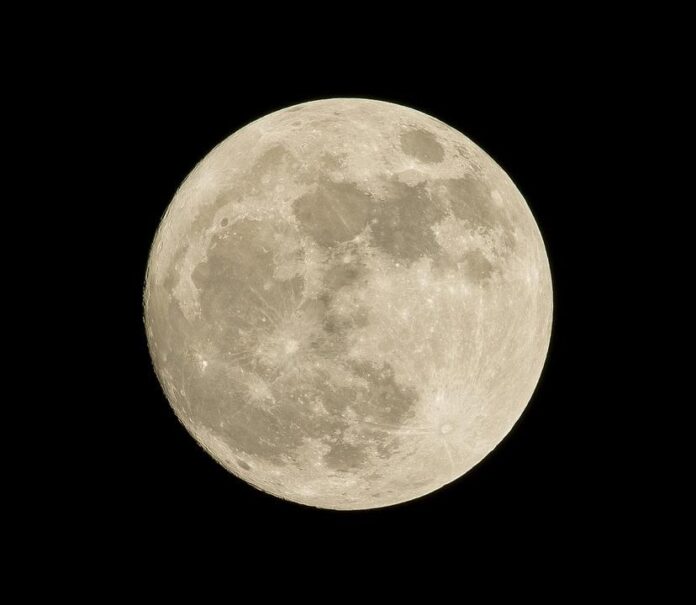Despite the fact that we have already set foot on its soil, the Moon continues to have a halo of mystery. And we are not talking about her influence on us and our planet, nor about the lunatic looks of lovers and poets. The Moon, our satellite, still has mysteries to solve.
The last thing was told this Wednesday by the POT. Have discovered a double crater on the dark side of the Moon. This is what the probe has seen Lunar Reconnaissance Orbiter (LRO). The double crater has surprised scientists, who they believe it could have been the result of a rocket hit last March.
This lunar mystery adds to a long list. Some have been resolved over time: the eyes that look from the Land more and more and with greater precision. But others are still waiting for an explanation.
how the moon came about
The Moon formed almost 4.5 billion years ago. The most widely accepted theory is the large impact hypothesis. which says that the Moon was the result of a catastrophic collision between the embryonic Earth and another Mars-sized protoplanet called Thea.
According to NASA, this impact would have been 100 million times greater than the collision of the asteroid which caused the extinction of the dinosaurs. The great similarity between the compositions of the Earth and the Moon support this theory.
The large impact hypothesis explains our satellite’s large size, but has difficulty accounting for other properties of the Moon, write Simon J. Lock and Sarah T. Stewart in an article in Scientific American. There are numerous aspects of the lunar origin that still remain to be clarified, but to date no better explanation has emerged.
The two authors give an account of a new explanation. A synestia (a hybrid between planet and disc, generated in an impact) could explain the birth of the Moon and the fact that its composition is so similar to that of the Earth. Synesthesias could appear regularly throughout the cosmos as a result of the planet formation process.
Was there life on the Moon?
In principle, no or at least there is no evidence of it. Scientists believe that at the time of its “birth” on the Moon there was water and heat. In addition, there was volcanic activity (releasing gas and steam) and it is believed that there may have been oceans. All this was a good beginning for life.
In 2018, a study published in the journal Astrobiologysuggested that the Moon it could have harbored life about 3,500 million years ago, due to that volcanic activity. Astrobiologists from the University of the State of Washington and London analyzed numerous lunar rocks, finding traces of volcanic activity on the Moon.
Gas and vapor emissions could have created «wells of liquid water on the surface and an atmosphere dense enough to keep it in a liquid state for millions of years, a precondition for the appearance of life». However, according to astrobiologist Dirk Schulze-Makuch, the most likely scenario “It is that life was not born on the Moon, but that it rained from the sky aboard a meteorite”, then finding conditions to adapt.
Where does the water on the Moon come from?
There is water on the Moon. Yes, we don’t know how much, but there is water. So far, it has been found frozen and in small quantities. Especially at the South Pole of the satellite.
In 2020, the POT explained that on the surface of the Moon there are numerous craters and some very small. In these there could be much more water because the sunlight never reaches them. There is also water in the ice left behind by comets. The last is the one that is formed by the interaction of the solar wind and the silicates that are in the lunar soil.
The dark side
It is the non-observable hemisphere from Earth because the satellite always has the same face. It explains why the Moon takes to rotate on itself the same as its movement of translation around our planet. But why the moon it does not show on its hidden side dark areas like those that extend in the hemisphere that is seen from Earth, its “seas”? Penn State University astronomers solved the mystery in 2014.
Originally, the far side, away from the boiling Earth, slowly cooled. Later, large meteorites hit the near side of the Moon and passed through the crust, releasing large lakes of basaltic lava that formed the landscape of the visible side of the Earth. When meteoroids hit its hidden zone, in most cases, the crust was too thick and there were no magmatic basalt sprouts, creating valleys, craters, and mountains, but not seas.
A ‘cube’ on the dark side?
In November 2021, the Chinese Yutu-2 rover photographed a mysterious object to which the Chinese space agency referred to as “mystery cabin”. It looked like a cube. But no, it was not an object reminiscent of the monolith from Kubrick’s Space Odyssey.
In January of this year, engineers from the China National Space Administration (CNSA) managed to capture a closer image of the object. Y It was just a moon rock that the perspective of the initial photo turned into an almost perfect cube.
its strange orbit
The Moon appears to move in mysterious or at least unnatural ways. Its orbit in front of Earth should be elliptical, but it is almost entirely circular. In fact, he does it in circles and ovals, according to perspective. Scientists have seen that the Moon presents a regular wobble in its orbit. It was first seen in 1728. The satellite takes 18.6 years to complete that orbit.
Font: 20 minutes
Reference article: https://www.20minutos.es/noticia/5023555/0/la-luna-sigue-siendo-un-misterio-enigmas-de-nuestro-dear-satelite-que-estan-a-medio-resolver/













![[Img #73262]](https://thelatestnews.world/wp-content/uploads/2024/07/The-era-of-artificial-intelligence-in-digital-marketing-in-Spain-300x200.jpg)
Add Comment